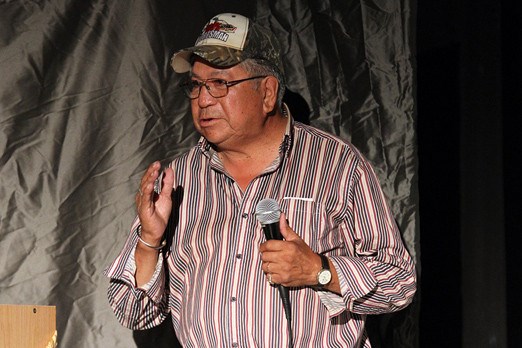Gilbert Legarde is one of the lucky ones.
Diagnosed with Type 2 diabetes more than two decades ago, he first found frustration. But after much soul searching he found the courage he needed to make the lifestyle changes needed to temper the potentially fatal disease.
Twenty years later he’s still around to tell his tale, which he did in Weweni Bimaadidiwin (Looking After Life), a video created by Dilico Anishnabek Family Care aimed at helping to eliminate the disease from Ontario’s First Nation communities.
The title says it all, Legarde said Friday, moments before the video was premiered in Thunder Bay.
"I had to change my ways of life. You have to choose which way you’re going to go. If you want a healthy life you have to give up the stuff that you did when you were a healthy person," said Legarde, who admitted he probably drank too much and developed poor eating habits. "Myself I said, If I want to live longer, I’ll have to start over, take care of my life in a much better way than I did before."
It’s a decision more and more First Nation people are faced with these days.
The Type 2 diabetes numbers are staggering in Aboriginal communities, where one in seven people are afflicted with the potentially fatal disease. That’s between three and five times greater than non-Aboriginal populations elsewhere in Canada.
The video has been designed to stop the disease in its tracks, said Georgina Redsky, Dilico’s community health manager, adding while prevalent, most people aren’t aware the disease is preventable through diet and exercise.
"What we want to do is help with the prevention part," Redsky said. "The best way to help prevent diabetes is to get at their level."
Aboriginals learn and react differently than other cultures, and thus their medical care must reflect those realities, Redsky said. It often takes a little longer for First Nations people to admit they have a medical problem and longer still for them to seek a cure.
That’s why Dilico decided to make the video and visit several communities in Northwestern Ontario while doing so, using real people to tell real tales.
"It really does make an impact. We need to recognize they have a unique style of learning. Trust is a big thing. We have to get through to the people we work with," Redsky said, adding seeing a familiar face in the 20-minute video could convince others - particularly younger Aboriginals - to come forward to seek treatment.
The video, grounded in First Nations’ culture and ways, will identify symptoms and risks, help viewers understand the disease and what changes they might need to make to survive.
It will be distributed to health centres throughout the Northern Superior First Nations.
